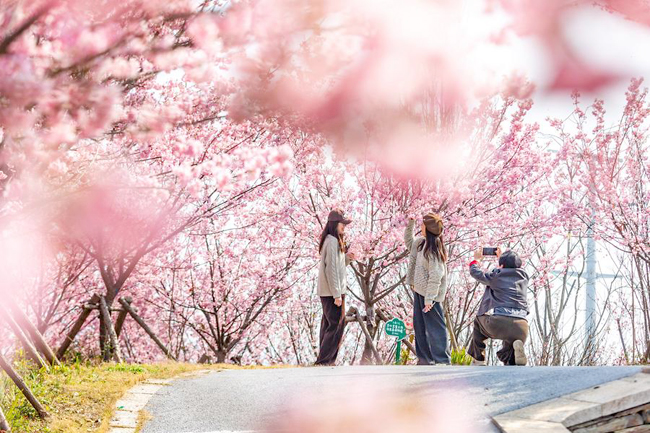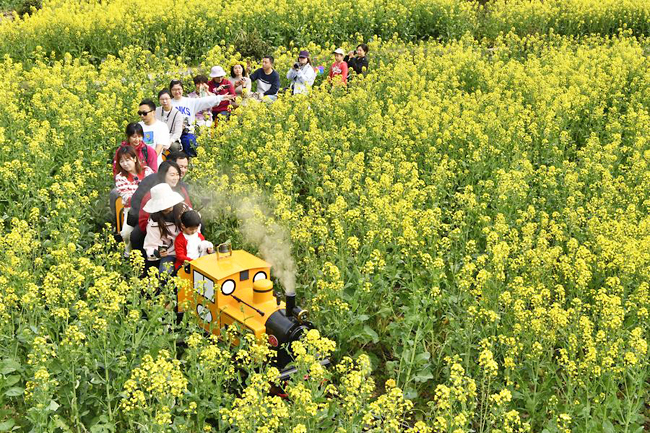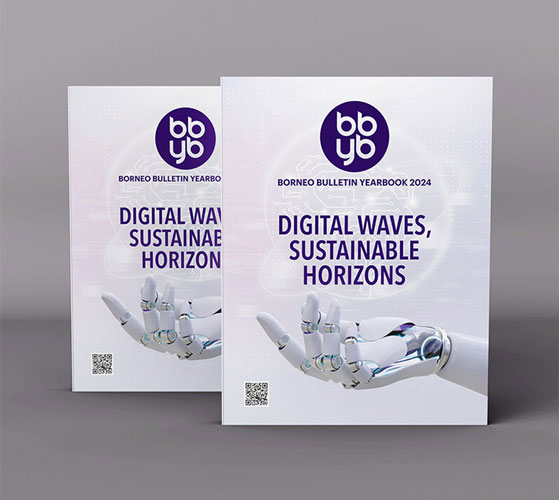BEIJING (XINHUA) – As cherry blossoms reach peak bloom at Beijing’s Yuyuantan Park, visitors like Qiao Yanwei don floral crowns and traditional attire, queuing for the perfect photo-op.
Carrying a stool to better frame herself against pink sakura, she has planned to visit the park more frequently thanks to an upcoming free shuttle bus linking the park with her home in the city’s west. Across China, spring’s “flower fever” is in full swing. Since March, blossom-themed tourism has dominated online travel platforms, with cities publishing “blossom maps” to guide enthusiasts.
Founder and CEO of tech giant Xiaomi Lei Jun, recently shared a pre-dawn tour of cherry groves of Wuhan University, his alma mater, only to find visitors already crowding the campus. In Shenyang’s Dongta Park, northeast China, magnolias bloom against ancient pavilions.
“The spring flower guide on the government website says peach, apricot, and crabapple blossoms will bloom soon — I’ll try to see them all in one trip,” said tourist Tian Jiahui from Beijing.
The flower economy is reshaping consumption through creative cultural integrations.
Wuyuan County in east China’s Jiangxi Province blends floral viewing with heritage experiences: riding vintage trains through rapeseed fields, sipping tea in flower fields, and posing with Jialu oil-paper umbrellas – a cultural heritage item now booming in sales.
Nighttime stargazing and firefly tours extend stays, doubling visitor spending. “Flower tourism redefines agriculture by transforming landscapes into economic catalysts,” noted Associate Professor at Tongji University Zhang Xin. From rural charm to urban chic, the trend merges nature with commerce.
In Shanghai, fresh-food chain Hema Fresh’s “premier membership” store showcases orchids at its entrance. Flower sales now surge over 50 per cent year-on-year in cities like Chongqing and Xi’an, transitioning from holiday gifts to daily indulgences, according to the company. Young consumers also embrace pun-driven blooms. At a Beijing flower shop, plants like mini pines (meaning “relax” in Chinese) or persimmon-themed arrangements (the same pronunciation as “success” in Chinese) cater to wordplay-hungry buyers.
“Flowers answer an emotional need,” explained researcher Zhang Sining of Liaoning Academy of Social Sciences. Whether immersive blooms at a park or a one-dollar daisy bouquet from a subway vending machine, consumers seek joy in petals.
With 1.5 million hectares of flower farms and 209,500 related businesses, China’s floral industry employs five million. Innovations like weekly subscriptions and self-service kiosks fuel growth.
“Flowers soothe my busy days,” said office worker in Shenyang Song Xianan, who bought some flowers for his girlfriend after a day’s work.

PHOTO: XINHUA





